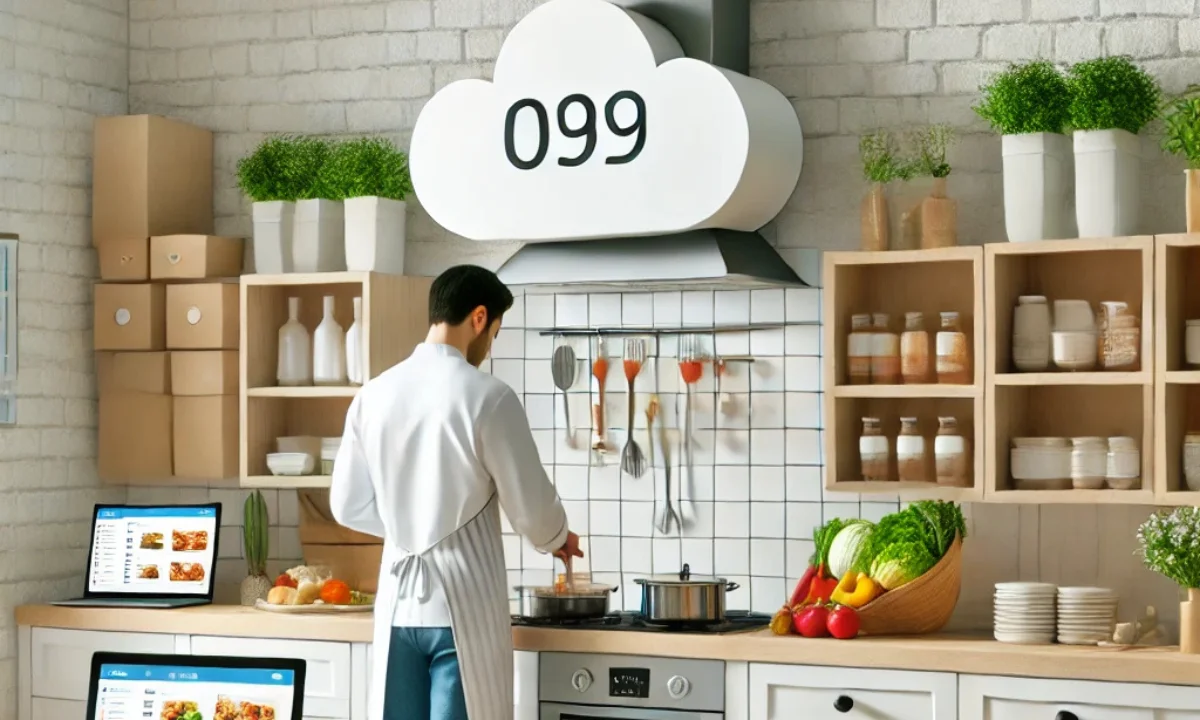Introduction
How to Start a Cloud Kitchen from Home – The food industry has evolved significantly over the years, and one of the latest trends is the rise of cloud kitchens. A cloud kitchen, also known as a ghost kitchen or virtual restaurant, is a commercial kitchen that prepares food exclusively for delivery or takeout, without a dine-in facility. With the increasing demand for online food delivery, starting a cloud kitchen from home can be a profitable business venture.
If you have a passion for cooking and want to turn it into a business, this guide will take you through every step of starting a cloud kitchen from home. From planning and setting up to marketing and scaling, here’s everything you need to know.
1. Understanding the Cloud Kitchen Concept
What is a Cloud Kitchen?
A cloud kitchen is a food business that operates without a physical storefront. Customers place orders through food delivery apps like Swiggy, Zomato, Uber Eats, or directly through a website. The food is then prepared and delivered to customers without any dine-in option.
Why Start a Cloud Kitchen from Home?
- Lower Investment – No need to rent or maintain a restaurant space.
- High Profit Margins – Reduced overhead costs lead to better profitability.
- Flexible Operations – You can run the kitchen from home with minimal staff.
- Growing Demand – Online food delivery services are booming worldwide.
2. Research and Planning
Market Research
Before starting, conduct market research to understand:
- The demand for different types of food in your area.
- Competitor analysis – Who are your competitors, and what are they offering?
- Pricing strategies – Find out what customers are willing to pay for similar food.
Choosing Your Niche
Selecting a niche will help you stand out. Some popular options include:
- Healthy meals
- Fast food
- Vegan and vegetarian meals
- Regional cuisines
- Bakery and desserts
Defining Your Target Audience
Identify who your customers are:
- Young professionals
- Families
- Health-conscious individuals
- Students
Read More – How to Start a Cloud Kitchen
3. Legal Requirements and Licenses
Registering Your Business
- Choose a business structure (sole proprietorship, partnership, or private limited company).
- Register your business with the appropriate authorities.
Food Safety and Hygiene Licenses
- FSSAI License – Mandatory for food businesses in India.
- Local Health Department Permit – Ensures compliance with hygiene standards.
- GST Registration – Required for tax compliance.
- Trade License – To operate a business legally.
4. Setting Up Your Cloud Kitchen at Home
Kitchen Space and Equipment
Ensure your kitchen meets food safety standards. Essential equipment includes:
- Cooking appliances (stove, oven, microwave, etc.)
- Refrigeration units
- Food storage containers
- Packaging materials
- Safety and sanitation supplies
Staffing Requirements
Since you are starting from home, you may not need many employees initially. However, as demand grows, consider hiring:
- A chef (if required)
- Kitchen assistants
- A delivery person (or rely on third-party apps)
5. Creating Your Menu and Pricing
Menu Planning
Your menu should be:
- Easy to prepare – Avoid complex dishes that require long preparation times.
- Delivery-friendly – Choose items that stay fresh and intact during transit.
- Cost-effective – Use ingredients that are easy to source and affordable.
Pricing Strategy
Consider:
- Cost of ingredients
- Packaging costs
- Delivery charges
- Competitor pricing
6. Partnering with Food Delivery Apps
Choosing the Right Platform
List your cloud kitchen on popular food delivery platforms like:
- Swiggy
- Zomato
- Uber Eats
- Dunzo
Building Your Own Website and App
Having your own website can:
- Reduce commission costs from third-party apps.
- Allow customers to place direct orders.
- Build brand credibility.
7. Marketing and Promotion
Social Media Marketing
- Use Instagram, Facebook, and Twitter to showcase your food.
- Share high-quality images and videos.
- Engage with customers through comments and direct messages.
SEO and Google My Business
- Optimize your website for search engines.
- Register on Google My Business to appear in local searches.
Offering Discounts and Promotions
- Provide first-time order discounts.
- Introduce combo deals and meal plans.
Customer Reviews and Testimonials
Encourage satisfied customers to leave positive reviews on:
- Zomato
- Swiggy
8. Managing Finances
Budgeting and Cost Management
Keep track of:
- Ingredient costs
- Delivery charges
- Packaging expenses
- Marketing budget
Revenue and Profit Calculation
Calculate your:
- Cost per meal
- Profit margin per order
- Monthly revenue goal
9. Expanding Your Cloud Kitchen
Scaling Up Operations
- Expand your menu.
- Hire more staff as demand grows.
- Invest in better kitchen equipment.
Opening Multiple Locations
- Consider opening multiple cloud kitchens in different areas.
- Partner with local chefs to offer diverse cuisines.
10. Common Challenges and Solutions
Food Quality and Consistency
- Standardize recipes and cooking processes.
Delivery Delays
- Partner with reliable delivery services.
Customer Retention
- Offer loyalty programs and personalized discounts.
Conclusion
Starting a cloud kitchen from home can be a highly rewarding venture if done right. By following the right steps—from planning and obtaining necessary licenses to setting up a menu and marketing your brand—you can build a successful online food business. With dedication and the right strategy, your cloud kitchen can grow into a thriving food brand catering to a large customer base.
If you’re passionate about food and ready to take the leap, now is the perfect time to start your own cloud kitchen from home!

1 thought on “How to Start a Cloud Kitchen from Home: A Complete Guide”